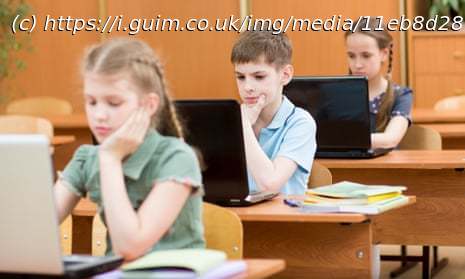Less than half of Australian children and teens think they can tell real news stories from fake. So how well are we preparing them for a new media world order?
Beneath an old Queenslander on the south side of the Brisbane River, beside a garage with a hand-painted sign that reads “recording” and above a computer in a cluttered spare room, is a Post-it note.
“Sugar-coated broccoli,” it reads.
The home – “not unlike Bluey’s” – belongs to Bryce Corbett and doubles as an unofficial headquarters of the children’s news podcast he founded and co-presents, Squiz Kids. The note, its guiding philosophy.
Daily episodes tackle a headline story – like South Australia’s proposal to ban children from social media – covered to inform, but not frighten, kids. That’s the broccoli. The coating: a bit of fun science, pop culture and, of course, animal stories – the alligator that came to school, the world’s funniest crab joke.
Corbett’s chat, too, is professional yet upbeat. Upbeat, that is, until asked about the emergent media landscape into which children are entering at an increasingly young age.
“I don’t think it is overblown to say that we are sleepwalking our way into a dystopian future,” he says.
“Misinformation and disinformation, the rate at which it is being peddled and believed and shared by a naive global populace is, I think, the biggest threat to democracies around the world,” says Corby, who has worked in journalism and media for more than two decades.
The impacts of poor media literacy upon society are not limited to the ballot box. Misinformation has been linked to a spate of bloody coups – successful and thwarted – around the world and major powers have accused one another of weaponising it on an industrial scale to stoke division and conflict. The proliferation of conspiracy theories and the erosion of trust in science, expertise and institutions threatens to compromise everything from action on the climate crisis to preventing the spread of pandemics. On the less extreme end of the spectrum, and more generally, a media-literate population is an essential component of an active and informed citizenry.
Corbett says the insidious nature of misinformation was made clear to him about eight years ago at the family dinner table when his children started regurgitating dubious “facts” they had come across on social media. When it came to mis- and disinformation, he realised, his own children were like an unvaccinated person exposed to a novel virus.
“It all felt like a really big hole in the education of these kids that needed to be filled,” he says.
Corbett is not alone in that belief. Information systems and communications researchers say the scale and magnitude of change to the means through which we make sense of the world is such that media literacy ought be a bedrock of education.
However, according to Tanya Notley, an associate professor in digital media at Western Sydney University, Australia is a global laggard on this front among advanced democracies.
“Our research suggests most children are not getting access to regular media literacy education that would help them to verify misinformation,” she says. “We really need to be doing more”.
Since 2017, Notley has led three national surveys into young Australian’s media habits.
Домой
United States
USA — IT Reading, writing and… disinformation: should schoolchildren be taught media literacy like maths?






